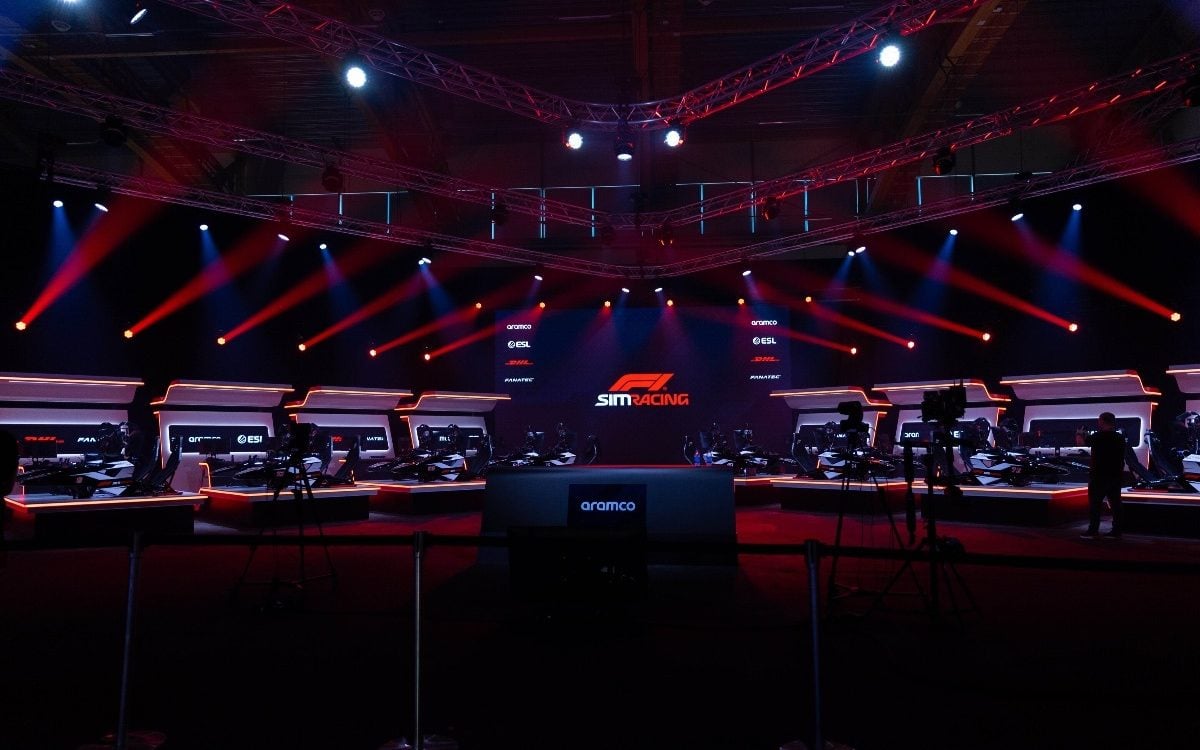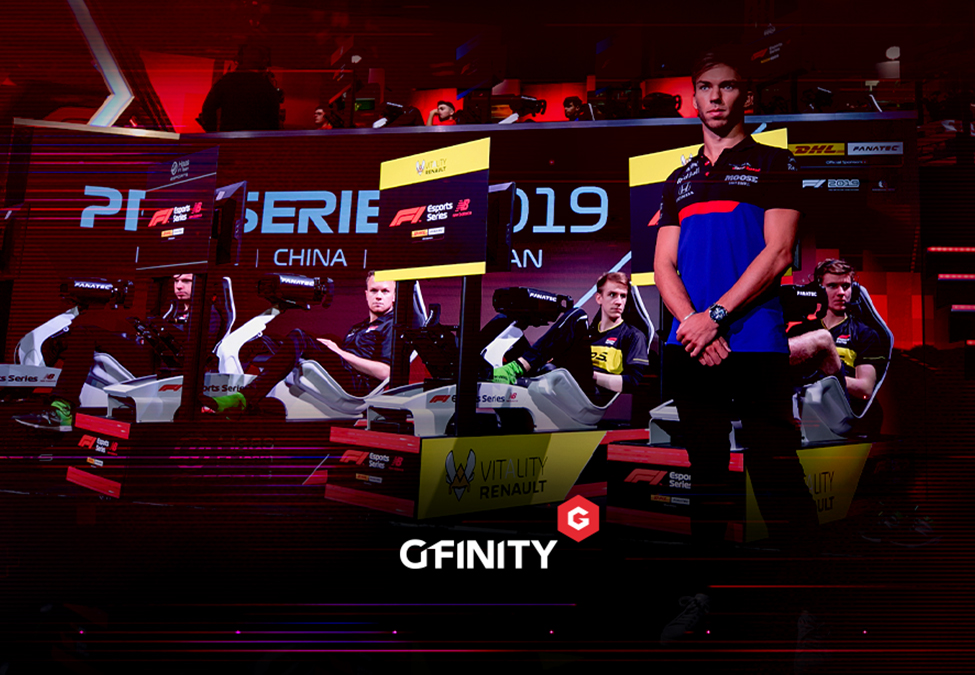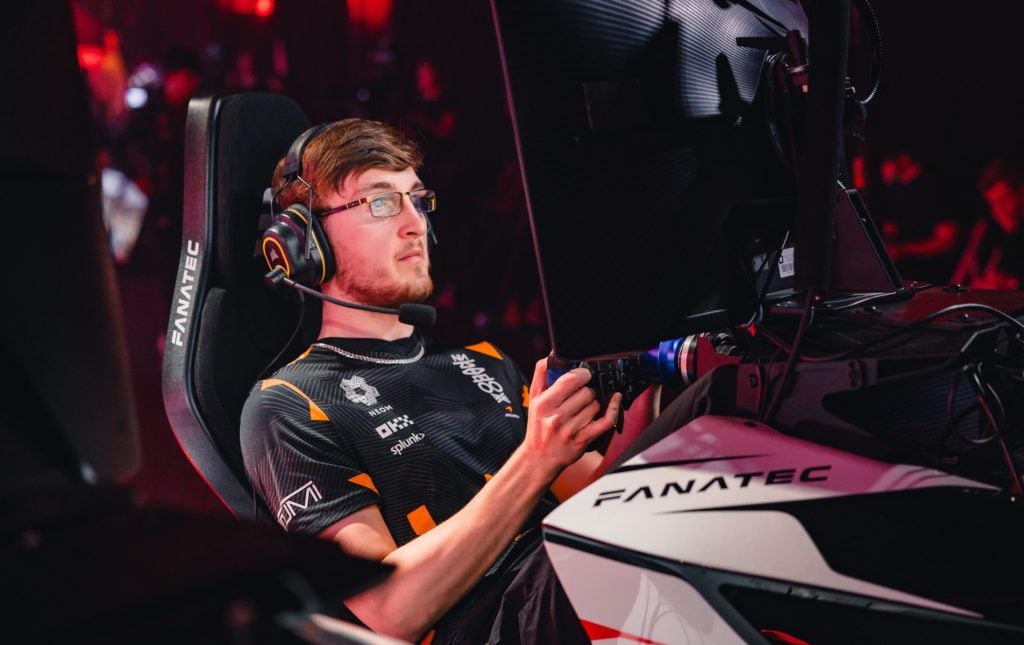
Formula 1 (F1) is the most popular form of racing in the world with its Grand Prix events pulling in millions of viewers from around the world. Meanwhile, sim racing took the racing world by storm over the COVID-19 pandemic, with drivers trading in cars for sim racing rigs and the scene generating new eyes.
The potential for F1 esports, centred around the series’ game franchise, was clear to see. It had its moment in the sun, but after its tremendous rise during COVID came its hard fall. So, why did F1 esports go through a period of complete silence? Has the scene bounced back? And what’s in store for the future?
To answer that question it’s important to look back at the peak of F1 esports during the COVID-19 pandemic.
The rise
In 2020, the world was at a complete standstill, including F1. To provide entertainment F1 turned to online events that broadcasted to hundreds of thousands of fans featuring well-known sim racers and mainstream F1 racers such as Charles Leclerc and Lando Norris. Its peak event, the F1 Esports Virtual Grand Prix Series Vietnam, reached 400,000 concurrent viewers.
“Over lockdown, that’s when [F1 sim racing] really peaked.” Max Fleckney, Sim Suite Operator Technician at the Silverstone Museum, stated. “F1 set up the esports series and that gathered loads of viewers, it was being shown on Sky Sports and people were using it when F1 wasn’t around to get their fix of Formula 1.”
The F1 Esport Series was first announced in 2017 with its inaugural event, ran by Gfinity and F1, attracting 60,000 players trying to qualify. The series transitioned from LAN to online when COVID stuck, with an influx of new viewers hitting the esport before the competition headed back on-site in 2022.
As pandemic restrictions were lifted and fans flocked back to traditional F1 races, viewership slowly dissipated. Still, this boost in popularity firmly established sim racing within the esports market, whilst also growing as a niche sector within the racing industry.
Sim racing has established itself as a dark horse in the esports industry over the last few years. F1 is also not the only sim racing game on the market with iRacing, Project CARS 2, Assetto Corsa Competizione, and more, prominent in the scene. There is a clear interest in the genre, however, it has not been smooth sailing.

The fall
Whilst F1 Sim Racing did its fair share of growing, in 2023 instead of capitalising on the continued hype around it, the circuit came to a dramatic halt. Instead, community-driven platforms, such as PSGL, had to fill the void.
The 2023–24 Formula One Sim Racing World Championship was left in a state of unknown following delays upon delays. With organiser Gfinity and F1 parting ways ahead of the campaign, the esports circuit was on the market and eventually ESL took over the running of the events, as noted from an AMA by G2 Esports’ Head of Sim Racing.
The esports circuit was rebranded as F1 Sim Racing and then there was complete silence. Ahead of the 2023/24 season, neither ESL nor F1’s social media accounts made any announcements. The only indication the community had that anything was happening was the fact that drivers and stakeholders all began to joke about going to the Maldives in November.
It was only on November 22nd 2023 that one of the competitors, Haas, announced their line-up and in turn gave fans the date of when the first F1 Sim Racing race was meant to begin — November 24th. There was still silence on the official channels and two days later, the race never happened. The very next day, on November 25th at DreamHack Sweden, a livestream appeared, the F1 Esports Twitter account was activated and the F1 sim racing season, out of nowhere, began.
At the end of the event, the stream stated that the next race would take place from December 15th – 16th, but close to the race date it was cancelled. Then radio silence. In April 2024, the revamped F1 Sim Racing World Championship was announced. The 11 races, which took place over two LANs, went off without a hitch and many fans were pleased to see the event return given its tumultuous start a year prior.
According to a video by sim racing content creator Alex Gillion, the reason for the lack of tournaments last year was due to a contractual disagreement between F1 Esports and ESL, but there was no official confirmation of this from both parties. Regardless of the reasons, instead of constant updates through the proper channels, there was silence.
Due to the lack of structure from the official F1 Esports World Championship, the professional scene turned to community events run by companies like Premier Sim Gaming Leagues (PSGL) and World Online Gaming (WOR). The best F1 esports drivers such as Jarno Opmeer, Lucas Blakeley, Thomas Ronhaar, Frederik Rasmussen and Nicolas Longuet have turned to these online races to compete.
“Without community events there is no game,” said Byron Hale, Community Manager for PSGL. “Whether it’s the content creators or leagues like us, we all play a part and make the game worth watching, worth buying.”
These community leagues kept the F1 scene alive, but are no substitute for an official World Championship held on LAN.
Still, it isn’t just F1 Esports that has somewhat dropped the ball when it comes to growing the sim racing scene. Le Mans Virtual, which takes place on rFactor 2, is another perfect example. It held an event last year that attracted big names in racing including reigning F1 champion Max Verstappen. Unfortunately though, it was plagued by server issues which resulted in many drivers disconnecting. This included Verstappen who, in turn, lost the lead and withdrew from the event 7 out of 24 hours in.
However, despite these issues, sim racing clearly draws lots of attention. But decision-making from major organisers often lets the wider scene down.
Hale explained: “Sim racing as a whole is a growing industry, I work for PSGL and we did 3m views last year and that’s no small feat for anyone in sim racing, it’s a massive achievement. Sim racing is in a good place but the big organisers and bodies aren’t capitalising on it.”

The future
The F1 Sim Racing World Championship’s return was welcomed by many in the community. Despite not reaching viewership peaks from previous years, the races went smoothly and F1 23’s competitive season concluded before the launch of the game’s next franchise.
G2 and Alpine’s partnership points towards the continuance of F1 esports in 2024/25. So looking at the previous mistakes made, how can F1 esports improve?
First and foremost F1 Esports needs to continue to run a circuit — there simply needs to be races. If all races go ahead as planned, there needs to be better communication than what was previously seen. Before the most recent World Championship, there were no announcements for events, or races in this case, which is unheard of within esports and mainstream sports, as is not announcing delays or cancellations. Keeping up the communication that was seen during the revamped World Championship, is needed to keep fans interested in the esport.
The need for races and communication is apparent, but is there still that audience which needed sim racing during a time when F1 was delayed?
“On the consumer side we’ve noticed a steady increase since that decline,” noted Silverstone Museum’s Fleckney. “We have people come through the Sim Suite all the time, asking how do they get into Sim Racing? How do you become good at it? How do you become professional?
“People who come through, a lot of them know the professionals, they know of the big names. But they don’t know how to reach that point. It’s almost that there’s no clear progression up to that top tier, but from our point of view there is a massive want for it and massive need for it.”
The audience still exists for F1 esports, and sim racing as a whole. Despite the lack of communication over the last year the F1 Sim Racing World Championship 2023/2024 – Event Two, reached a peak viewership of 42,877. Whilst this doesn’t come close to the peaks of 2020, the peak is close to last year’s event and stands as a building block for the scene.
Not only is there an audience, but there is also a gap in the calendar that F1 esports can fill: the off-season. The time in between the F1 circuits when the drivers are on break and when hundreds of thousands of F1 fans are looking for something to watch.
Overall F1 esports is at a key moment in its history; a make-or-break. Whilst the community scene is prominent, the lack of a structured circuit for 2023/24 left the scene on a knife’s edge, but the potential is there. As the 2023/24 World Championship has now finished, only time will tell if F1 Sim Racing’s organisers have learned from their mistakes now that the franchise’s new game, F1 24, has been released.
Despite the difficulties the esport has faced, there is no reason that F1 esports does not see substantial growth. In theory, the scene should already be in a great spot and now it’s just time for F1 to capitalise on the community built around its game. There is no telling how long it will take to rebuild the viewership it has lost, but the framework is there and ready to be built upon.



